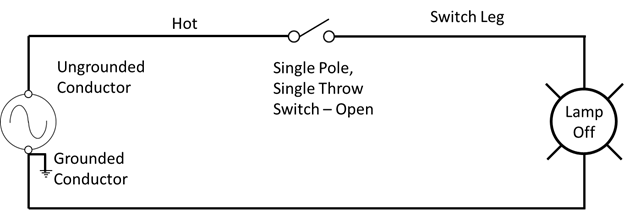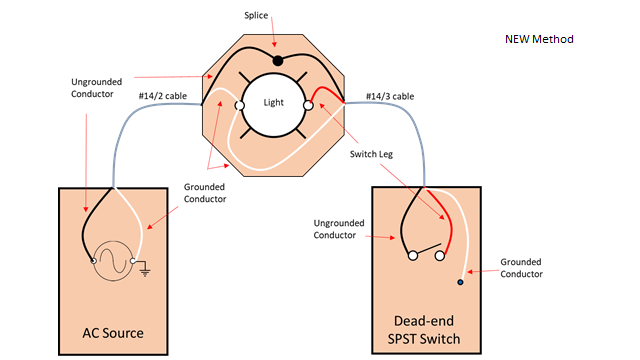47 Dead-end switch loops
Aaron Lee
A dead-end switch refers to a wiring technique used to save wire when a lighting outlet is located between a source of supply and the switch location.
Electrically the circuit is identical to a standard SPST switch circuit. The only difference is in the locations of the wires installed relative to the switches and lighting outlet.

A two-wire cable, such as a length of #14/2 BX, for example, can be run from the overcurrent device to the lamp load, and then a second length of two-wire cable run from the outlet to the switch. The switch leg back from the switch to the lamp cannot be the identified white wire.

This wiring method does not take into consideration that new Code rules require an identified conductor to be available at every switching location and will no longer be acceptable in new installations. However, workers should be aware of this style of switching as it is still found in many existing buildings.

With the CEC’s requirement of a grounded conductor being available at every switching location, we must instead run a three-conductor cable to the switch box, being sure to use only unidentified conductors, such as the black and red conductors as part of the switch loop, and leave the identified grounded conductor safely capped off and tucked aside.
